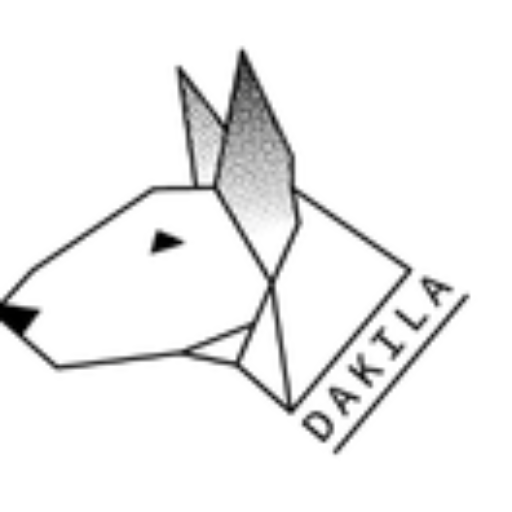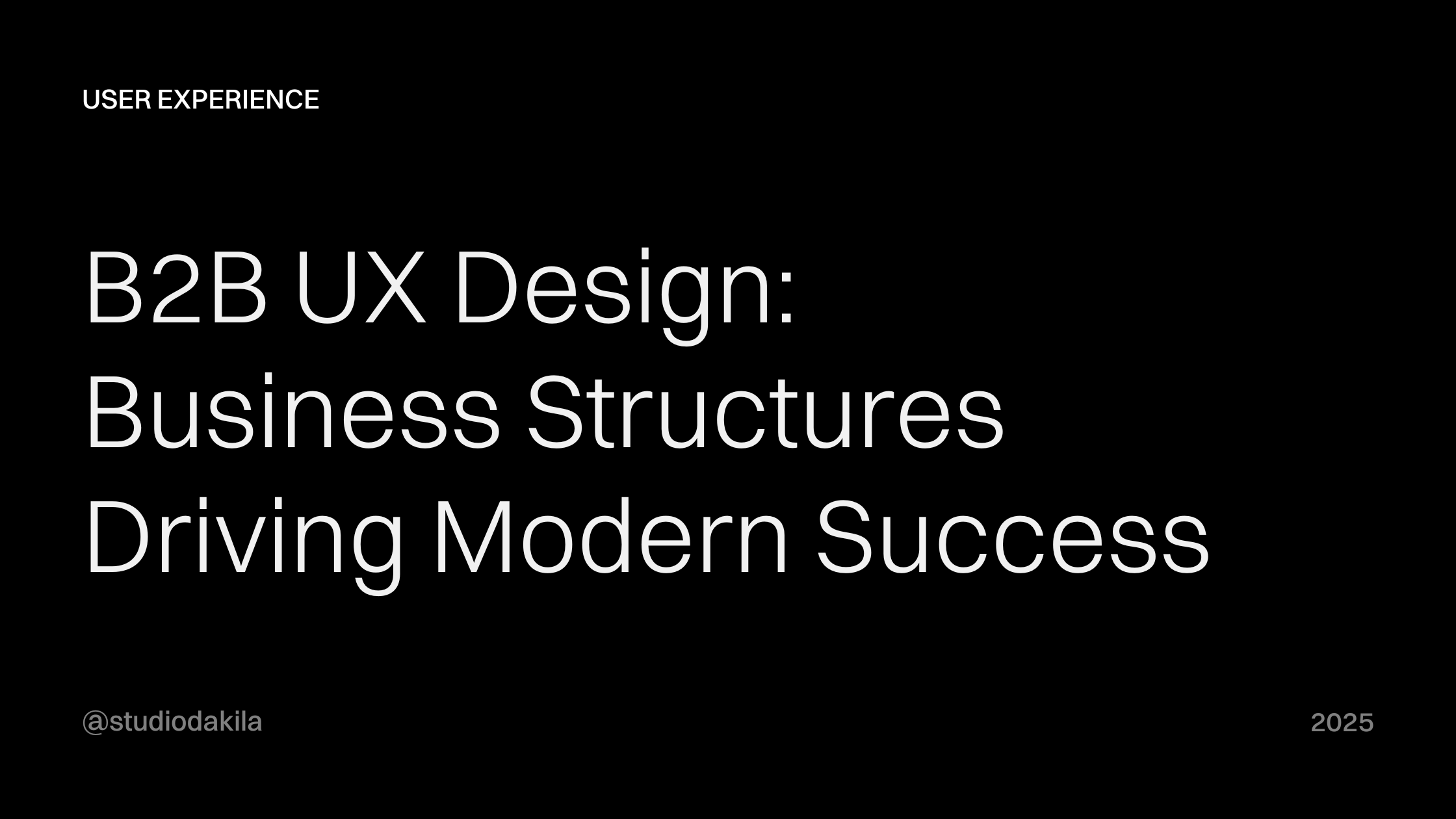The business structure behind your UX UI design work shapes client outcomes more than your technical skills ever will. This reality often remains hidden until designers face the crossroads between freelancing independence and agency collaboration.
We’ve witnessed dramatic shifts in how design services operate in the B2B space. The choice between solo practice and agency models carries implications far beyond simple work arrangements.
This decision influences everything from client relationships to project scope, team dynamics, and ultimately, the quality of design solutions delivered.
What Makes B2B UX Different?
B2B UX design fundamentally differs from consumer-focused work. When designing for businesses rather than individuals, designers navigate complex approval processes, limited end-user access, and systems with extensive legacy constraints.
B2B UX UI design involves providing design services to other businesses rather than individual consumers. These services focus on improving the usability and experience of products used by client companies’ employees or customers.
The stakes in B2B design often exceed those in consumer markets. A poorly designed interface can impact an entire organization’s productivity, potentially costing millions in lost efficiency. This is why user experience design is important – it directly affects business outcomes and operational effectiveness.
This high-stakes environment shapes how design services are structured and delivered. Both freelancers and agencies must adapt their approaches to address these unique B2B challenges.
The Freelancer Path: Independence With Trade-offs
Freelancing offers designers unparalleled autonomy. You control which clients to accept, which projects to pursue, and how to approach each design challenge.
This independence creates space for specialized expertise development. Many successful freelancers build reputations in specific industries or design niches, becoming recognized authorities rather than generalists.
The financial model varies significantly based on experience. Freelancer rates typically range from $20-40 per hour for beginners, $35-80 for mid-level designers, and $80-150 for senior freelancers, with additional variation based on location.
However, freelancing comes with significant challenges:
- The responsibility for client acquisition, project management, accounting, and business development falls entirely on one person
- Client relationships become particularly crucial without the buffer of an agency structure
- Isolation can impact creative growth without regular team collaboration
The Agency Approach: Collaborative Strength
Design agencies offer a fundamentally different business structure. They bring together diverse talents under one organizational umbrella, creating teams that tackle complex projects collaboratively.
This team-based approach provides distinct advantages for B2B clients. A professional UI UX design agency offers access to multi-faceted teams covering all design, development, and business strategy needs, resulting in more consistent work than hiring multiple independent freelancers who don’t collaborate.
The pricing structure reflects this comprehensive approach. Agencies typically charge between $3,000 and $30,000 for UI/UX projects depending on complexity, with hourly rates ranging from $25 to $200.
Agencies also provide infrastructure advantages:
- Established project management systems
- Streamlined client communication protocols
- Robust quality assurance processes
- Effective knowledge sharing frameworks
For designers working within a creative agency, this structure offers both benefits and limitations. The collaborative environment accelerates professional growth through exposure to diverse perspectives and feedback, but typically provides less autonomy in client selection, project approach, and schedule flexibility compared to freelancers.
Business Impact on Design Outcomes
The business model significantly influences the types of projects designers can effectively undertake. Freelancers excel with focused, clearly-defined projects where a single designer can deliver comprehensive solutions.
Agencies thrive with complex, multi-faceted initiatives requiring diverse skill sets working in concert. Enterprise-level redesigns, comprehensive product launches, and integrated system overhauls typically favor the agency approach.
Client expectations also vary based on the business structure they engage with. Businesses hiring freelancers often seek specialized expertise for specific challenges, while those engaging agencies typically expect end-to-end solutions that may include UI UX digital marketing integration.
These expectations shape every aspect of the client-designer relationship, from initial proposals to project management approaches and deliverable formats.
The business model even influences design decisions themselves. Freelancers may prioritize focused solutions within their expertise, while agencies can leverage diverse perspectives to explore broader solution spaces, including conversion rate optimization strategies.
Making the Right Choice for Your Design Career
Selecting between freelancing and agency models requires honest self-assessment. Consider your working style preferences, business development aptitude, and tolerance for uncertainty.
Financial considerations extend beyond simple rate comparisons. Freelancers must account for unpaid administrative time, benefits costs, and income volatility when calculating their effective compensation.
Career growth trajectories differ significantly between these paths. Agency environments typically offer clearer advancement structures, while freelancing success depends on business development as much as design skill improvement.
Many designers find that hybrid approaches offer compelling advantages. Some maintain agency positions while accepting select freelance projects, while others form small collectives that preserve autonomy while enabling collaboration.
The decision needn’t be permanent. Many successful designers move between these models at different career stages, adapting their approach as their skills, interests, and life circumstances evolve.
Client Acquisition Differences
Marketing approaches diverge dramatically between freelancers and agencies. Freelancers typically rely on personal networks, referrals, and portfolio visibility to attract clients.
Agencies invest in more structured business development processes, including dedicated sales teams, proposal specialists, and marketing strategies targeting specific industry sectors.
Portfolio presentation reflects these different approaches. Freelancers showcase individual expertise and personal style, while agencies demonstrate team capabilities and systematic processes.
For B2B UX designers specifically, effective portfolios demonstrate business impact alongside aesthetic quality. Clients need to understand how design solutions addressed business challenges and delivered measurable results.
Client relationships also follow different patterns. Freelancers often develop direct, personal connections with clients, while agencies establish more structured engagement models with defined points of contact and communication protocols.
Future Trends Reshaping the Industry
Several emerging trends are blurring the traditional boundaries between freelance and agency models:
- Digital platforms now connect freelancers into virtual teams, enabling collaboration without formal agency structures
- Specialized agencies increasingly partner with networks of independent contractors, creating flexible capacity without the overhead of full-time employment
- Client expectations continue evolving toward integrated solutions that combine UX design with digital marketing strategies
Technology democratization both simplifies and complicates the design landscape. Tools that once required specialized expertise become accessible to broader audiences, while new technologies create fresh opportunities for specialization.
These shifts suggest that successful designers will increasingly blend elements from both business models, creating personalized approaches that leverage the strengths of each while mitigating their limitations.
Building Your B2B UX Business Strategy
Regardless of which model you choose, certain fundamental principles apply to all B2B design businesses:
- Client relationships built on trust and clear communication form the foundation of sustainable success
- Continuous learning remains essential in this rapidly evolving field
- Specialization offers competitive advantages in crowded marketplaces
- Process documentation transforms individual capabilities into scalable systems
- Value-based pricing aligns compensation with client outcomes rather than hourly effort
Key Takeaways
- The structure behind your B2B UX practice significantly impacts client outcomes and business success.
- Freelancing offers autonomy but requires handling all business aspects solo, while agencies provide collaborative strength.
- Future success in B2B UX will likely involve hybrid models that combine elements from both approaches.
Take the Next Step in Your Design Journey
Whether you’re considering a shift from freelancing to agency work or vice versa, the right business structure can dramatically enhance your impact and satisfaction in B2B UX design.
FAQs
B2B UX projects typically involve more complex approval processes, legacy system constraints, and higher financial stakes due to organizational-wide impact.
Freelancers charge $20-150 per hour based on experience, while agencies typically charge $3,000-30,000 per project depending on complexity.
Yes, many successful designers move between these models at different career stages to match their evolving skills and circumstances.

